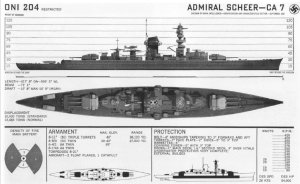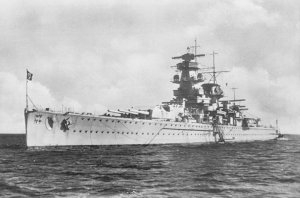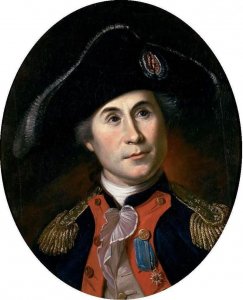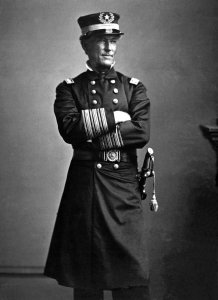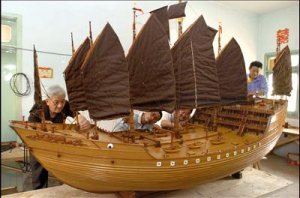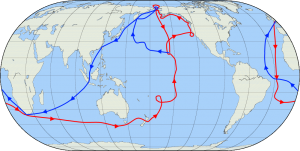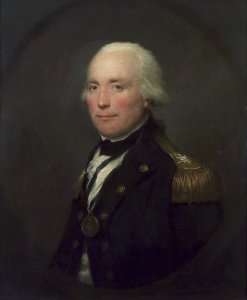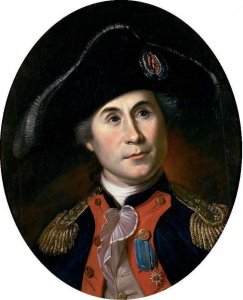Today in Naval History - Naval / Maritime Events in History
29th of June
some of the events you will find here,
please use the following link where you will find more details and all other events of this day .....
1694 - Dutch fleet attacks French grain transports in the Battle of Texel
The Battle of Texel was a sea battle fought during the Nine Years' War on 29 June 1694, when a force of 7 French ships, under Jean Bart, recaptured a French convoy, which had earlier that month been taken by the Dutch, and captured 3 ships of the 8-ship escorting force under Hidde de Vries. De Vries was captured by the French, but shortly after died of wounds

1758 - HMS Renown (30) took French Guirlande (22)
HMS Renown, launched 1747, was a 30-gun fifth rate, previously the French ship La Renommée, Sirene Class frigate.
She was captured in 1747 by HMS Dover and broken up in 1771.
An engaging waterline depiction of this ‘state-of-the-art’ vessel La Renommee, a Sirene Class 30-gun French frigate whose speed and prowess was of utmost interest to the British Admiralty. Its distinctive ‘tumble-home’ on the upper topsides was a particular feature of its naval architecture.

http://www.shipmodel.com/models/hms-renown-waterline-mod

1798 - HMS Pique (38), and HMS Jason captured Seine (42).
They all grounded near Pointe de la Trenche and Pique was bilged so it was necessary to destroy her.
HMS Pique was a 38-gun fifth rate frigate of the Royal Navy. She had formerly served with the French Navy, initially as the Fleur-de-Lys, and later as the Pique. HMS Blanche captured her in 1795 in a battle that left the Blanche's commander, Captain Robert Faulknor, dead. HMS Pique was taken into service under her only British captain, David Milne, but served for just three years with the Royal Navy before being wrecked in an engagement with the French ship Seine in 1798. The Seine had been spotted heading for a French port and Pique and another British ship gave chase. All three ships ran aground after a long and hard-fought pursuit. The arrival of a third British ship ended French resistance, but while the Seine and Jason were both refloated, attempts to save Pique failed; she bilged and had to be abandoned.

HMS Blanche tows the captured Pique into port, depicted by Robert Dodd
1813 - HMS Terrror launched in Topsham, Devon.
HMS Terror was a specialized warship and a newly developed bomb vessel constructed for the Royal Navy in 1813. She participated in several battles of the War of 1812, including the Battle of Baltimore with the bombardment of Fort McHenry. (It was at this battle where the "Star-Spangled Banner" was written by Francis Scott Key, which later became the American national anthem.) She was converted into a polar exploration ship two decades later, and participated in George Back's Arctic expedition of 1836–1837, the Ross expedition of 1839 to 1843, and Sir John Franklin's ill-fated attempt to force the Northwest Passage in 1845, during which she was lost with all hands along with HMS Erebus.

shipsofscale.com
29th of June
some of the events you will find here,
please use the following link where you will find more details and all other events of this day .....
Naval/Maritime History - 27th of August - Today in Naval History - Naval / Maritime Events in History
25 June 1808 HMS Caledonia was a 120-gun first-rate ship of the line (Caledonia-class like HMS Trafalgar) of the Royal Navy, launched on 25 June 1808 at Plymouth. She was Admiral Pellew's flagship in the Mediterranean. H.M.S. Caledonia, 120 guns, lying in Plymouth Sound The Admiralty...
shipsofscale.com
1694 - Dutch fleet attacks French grain transports in the Battle of Texel
The Battle of Texel was a sea battle fought during the Nine Years' War on 29 June 1694, when a force of 7 French ships, under Jean Bart, recaptured a French convoy, which had earlier that month been taken by the Dutch, and captured 3 ships of the 8-ship escorting force under Hidde de Vries. De Vries was captured by the French, but shortly after died of wounds
1758 - HMS Renown (30) took French Guirlande (22)
HMS Renown, launched 1747, was a 30-gun fifth rate, previously the French ship La Renommée, Sirene Class frigate.
She was captured in 1747 by HMS Dover and broken up in 1771.
An engaging waterline depiction of this ‘state-of-the-art’ vessel La Renommee, a Sirene Class 30-gun French frigate whose speed and prowess was of utmost interest to the British Admiralty. Its distinctive ‘tumble-home’ on the upper topsides was a particular feature of its naval architecture.
http://www.shipmodel.com/models/hms-renown-waterline-mod
1798 - HMS Pique (38), and HMS Jason captured Seine (42).
They all grounded near Pointe de la Trenche and Pique was bilged so it was necessary to destroy her.
HMS Pique was a 38-gun fifth rate frigate of the Royal Navy. She had formerly served with the French Navy, initially as the Fleur-de-Lys, and later as the Pique. HMS Blanche captured her in 1795 in a battle that left the Blanche's commander, Captain Robert Faulknor, dead. HMS Pique was taken into service under her only British captain, David Milne, but served for just three years with the Royal Navy before being wrecked in an engagement with the French ship Seine in 1798. The Seine had been spotted heading for a French port and Pique and another British ship gave chase. All three ships ran aground after a long and hard-fought pursuit. The arrival of a third British ship ended French resistance, but while the Seine and Jason were both refloated, attempts to save Pique failed; she bilged and had to be abandoned.
HMS Blanche tows the captured Pique into port, depicted by Robert Dodd
1813 - HMS Terrror launched in Topsham, Devon.
HMS Terror was a specialized warship and a newly developed bomb vessel constructed for the Royal Navy in 1813. She participated in several battles of the War of 1812, including the Battle of Baltimore with the bombardment of Fort McHenry. (It was at this battle where the "Star-Spangled Banner" was written by Francis Scott Key, which later became the American national anthem.) She was converted into a polar exploration ship two decades later, and participated in George Back's Arctic expedition of 1836–1837, the Ross expedition of 1839 to 1843, and Sir John Franklin's ill-fated attempt to force the Northwest Passage in 1845, during which she was lost with all hands along with HMS Erebus.
Kit review - HMS TERROR" - scale 1:75 from Occre
HMS Terror History mentioned by Occre: In 1845, under the command of Sir John A. Franklin, the ships Terror and Erebus set off on an expedition to navigate the famous Northwest Passage. They were the first ships to be fitted out with auxiliary steam engines and were also reinforced with iron...shipsofscale.com




